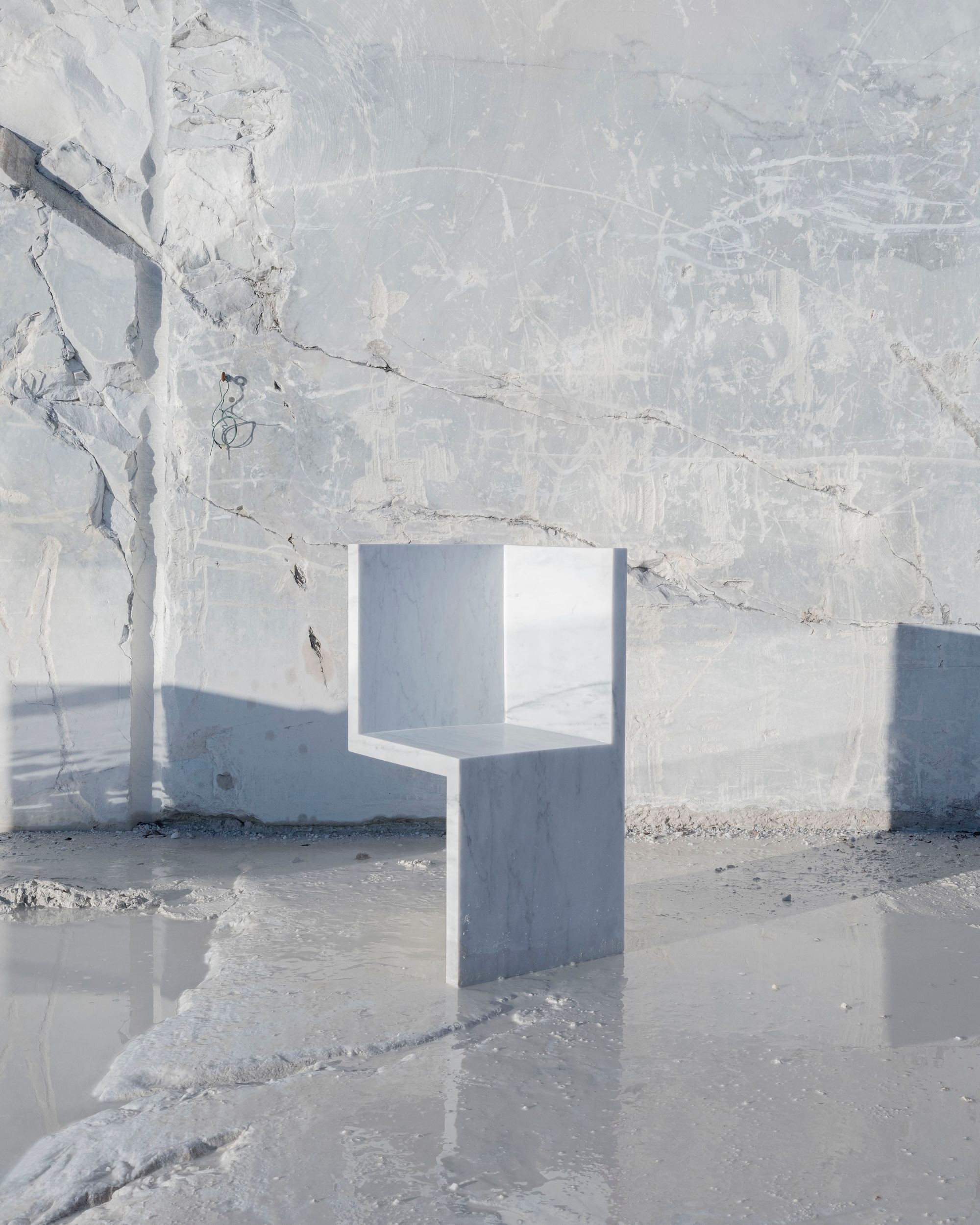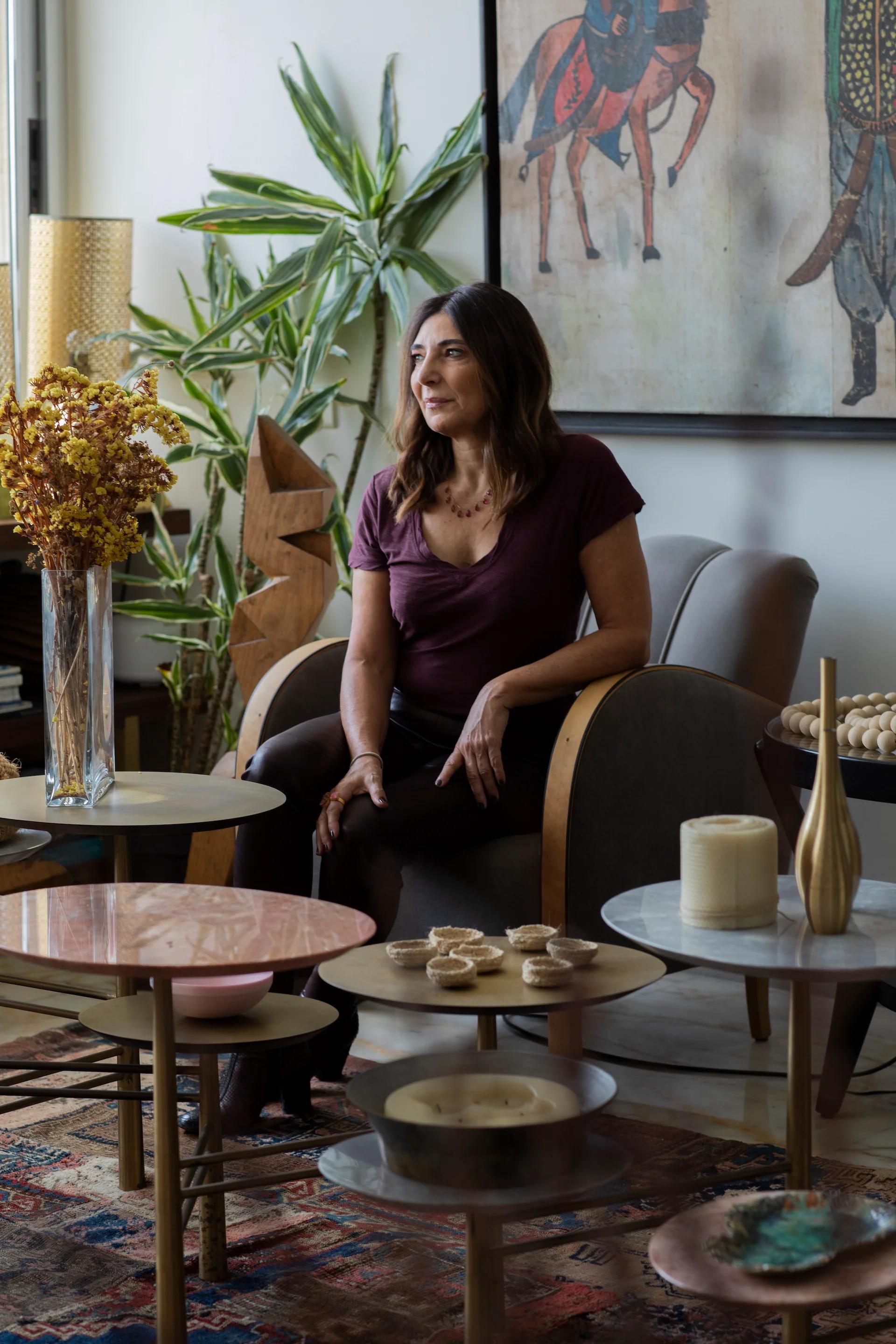CURRICULUM VITAE JUNE 30 2023
by Design Miami
New York’s INC Architecture & Design takes a purpose-driven approach to creating resonant spaces

INC’S SIXTEEN DOORS HOUSE IN COLUMBIA COUNTY, HILLSDALE, NEW YORK
Photo by Richard Powers, Courtesy of INC Architecture & Design
In 2006, a trio of young upstarts—Adam Rolston, Gabriel Benroth, and Drew Stuart—launched INC Architecture & Design from what they recall as very humble beginnings. “We started the studio in a tiny office in Tribeca that looked into a lightwell,” Rolston says. “Our bookkeeper sat on an upside-down bucket on her first day.” Fast forward nearly two decades, and INC is now a 50-person-strong operation with two new partners, Hilary Kroll and Tyler Kleck; a stunning Manhattan studio; and clients like Momofuku’s David Chang and Tishman Speyer, with multiple major cultural and landmarked architectural interventions under their belts.
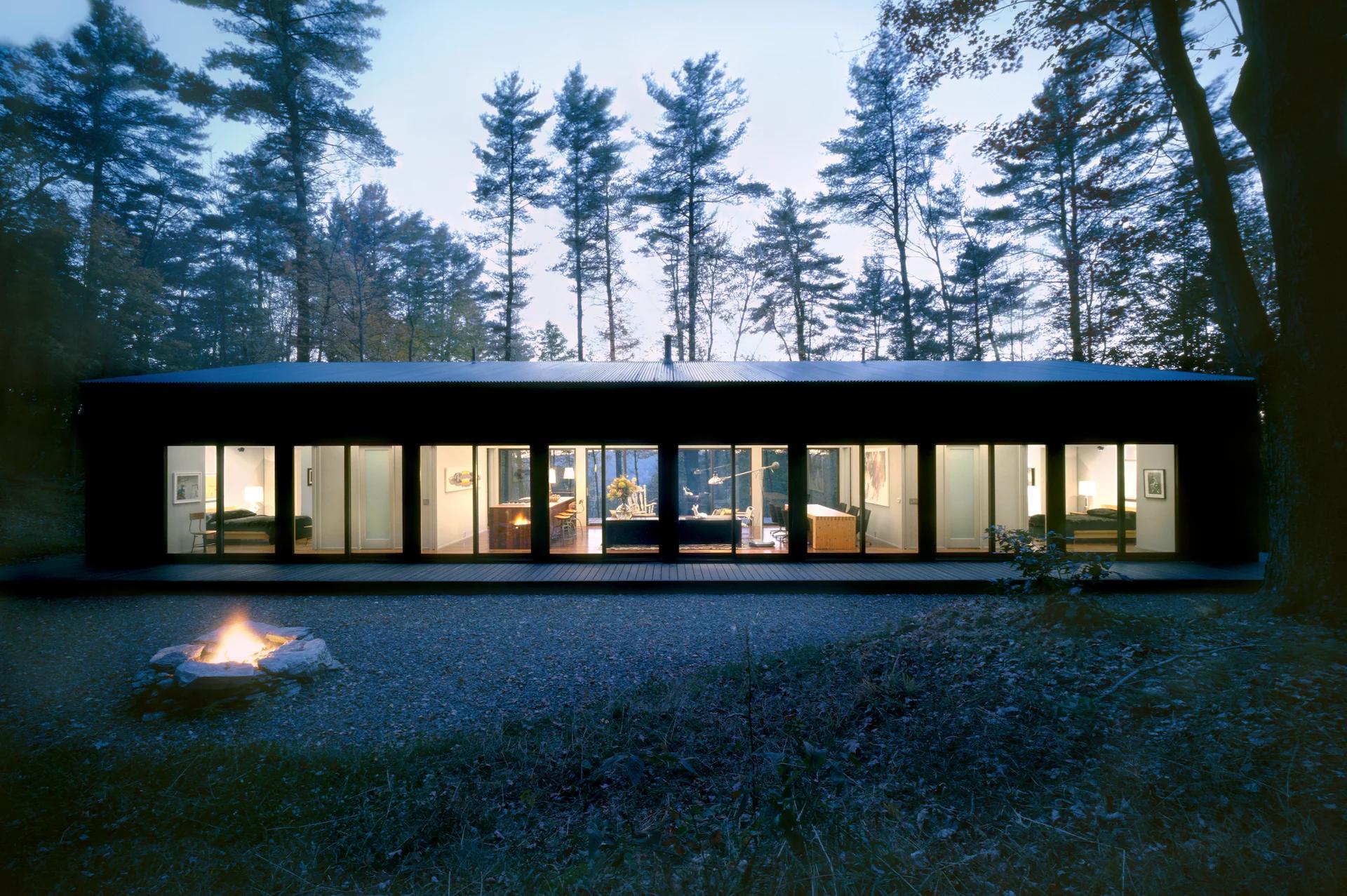
INC’S SIXTEEN DOORS HOUSE
Photo by Dave de Armas; Courtesy of INC Architecture & Design
Perhaps best known for recent, high-profile undertakings such as the TWA Hotel public spaces and Rockefeller Center’s subterranean overhaul, INC continually nurtures its own highly collaborative, multidisciplinary culture, while deeply connecting with each project’s social and cultural context. Or, as the founders put it, INC makes “design for humans.”
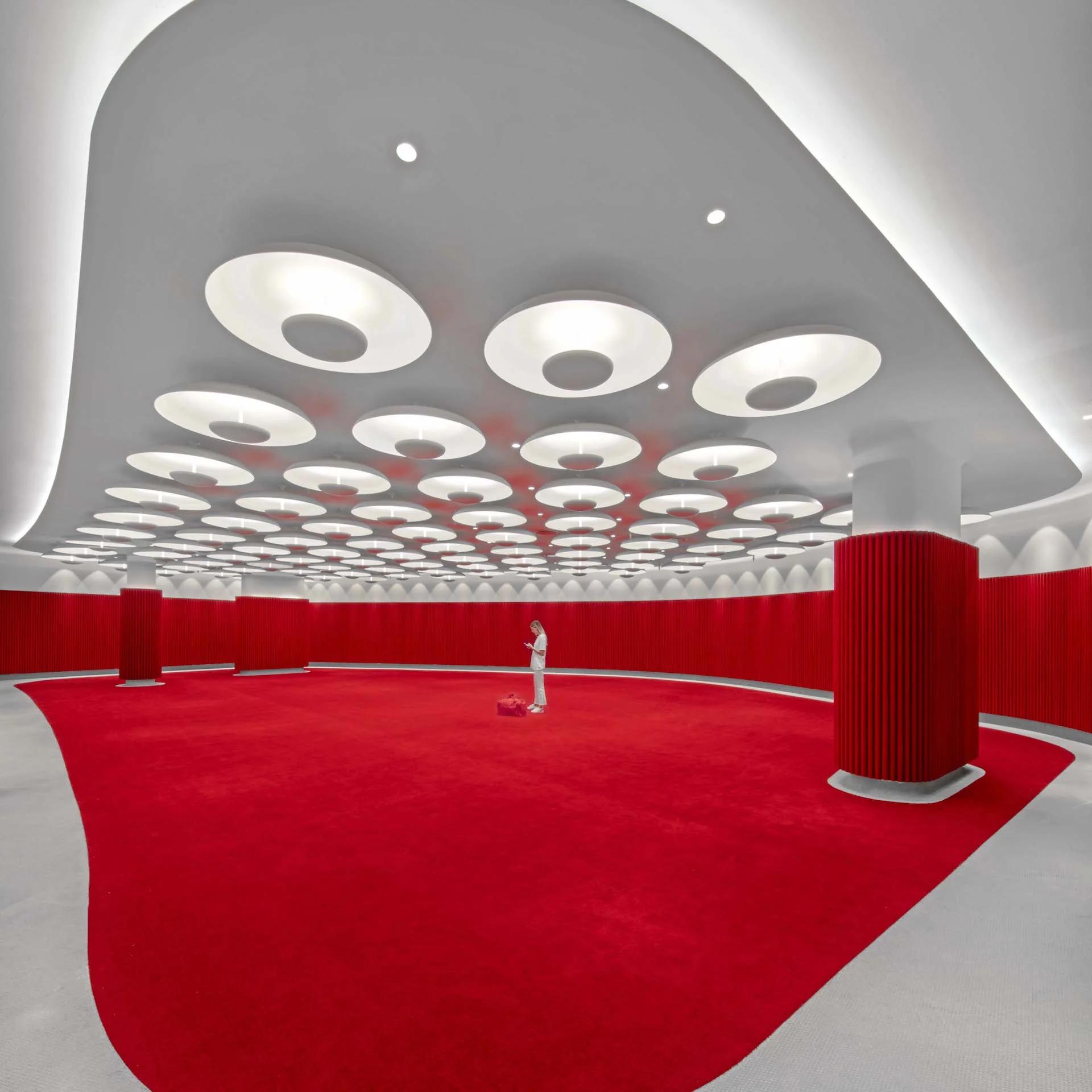
TWA HOTEL EVENT AND GALLERY SPACES IN QUEENS
Photo by Eric Laignel; Courtesy of INC Architecture & Design
At the core of their practice, INC embraces an approach they’ve dubbed “forensic aesthetics,” which centers the histories and communities of the places in which they work through scalable, integrated architectural and design choices that create a unified narrative—from larger structural frameworks down to doorknobs.
As Rolston explains: “By unearthing the historical and current culture of a space—who is the audience it serves, what is the history and rationale behind that existing structure—we determine how we intervene to create healthy spaces for people. As designers, we see our role as the connecter between the user and the cultures that identify any given place. That is our primary mandate, to create sticky spaces and places.”
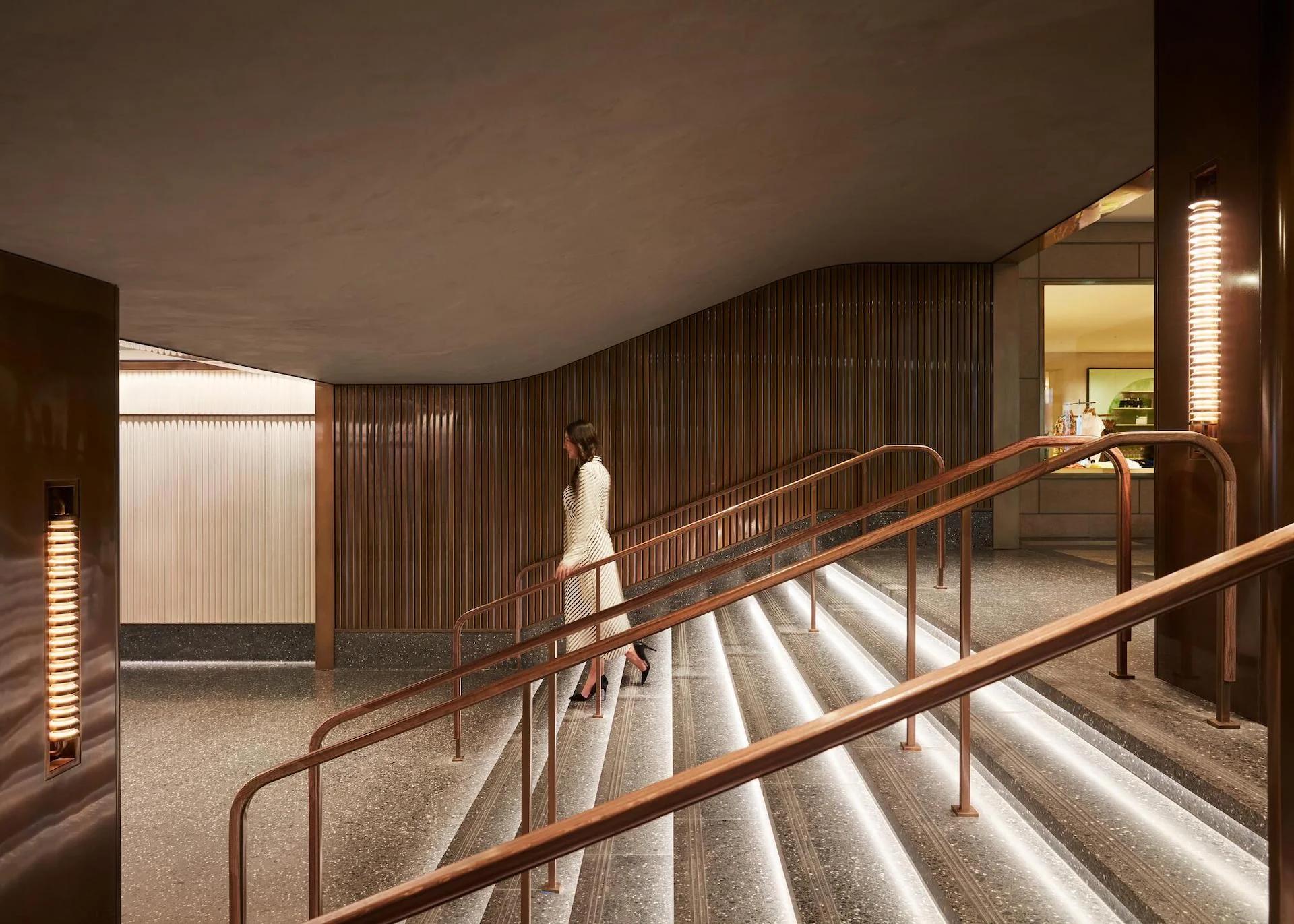
ROCKEFELLER CENTER RINK LEVEL
Photo by Stephen Kent Johnson; Courtesy of INC Architecture & Design
At Rockefeller Center, for example, INC took advantage of the storied location’s incredible archive, “nerding out and digging in” to determine the fundamental design principles upon which the original landmark was built. Tasked with serving locals, tourists, and the business community, INC honored the original plan’s “heroic verticality and Art Deco, horizontal flow,” combining it with a contemporary feel and improved functionality, resulting in a cohesive ethos that manifests everywhere from surface treatments and lighting to a subterranean farm-to-table restaurant. At the same time, INC created a framework for wayfinding, incorporating much of the necessary signage into the terrazzo surface itself, elegantly facilitating an easy-to-follow navigational concept that not only links the vast underground concourse to the buildings above—but also marries the iconic location’s past and present.
INC is currently applying their forensic aesthetic approach to yet another highly recognizable space: Brooklyn Museum’s highly anticipated new restaurant. Inspired by the notion of a literal moveable feast, the as-of-now hush-hush project will include collaborations with a range of creatives to reflect the progressive institution’s commitment to its role as the People’s Museum.
We sat down with Rolston to learn more about INC’s evolution and culture, their signature approach, and key projects—past, present, and forthcoming.
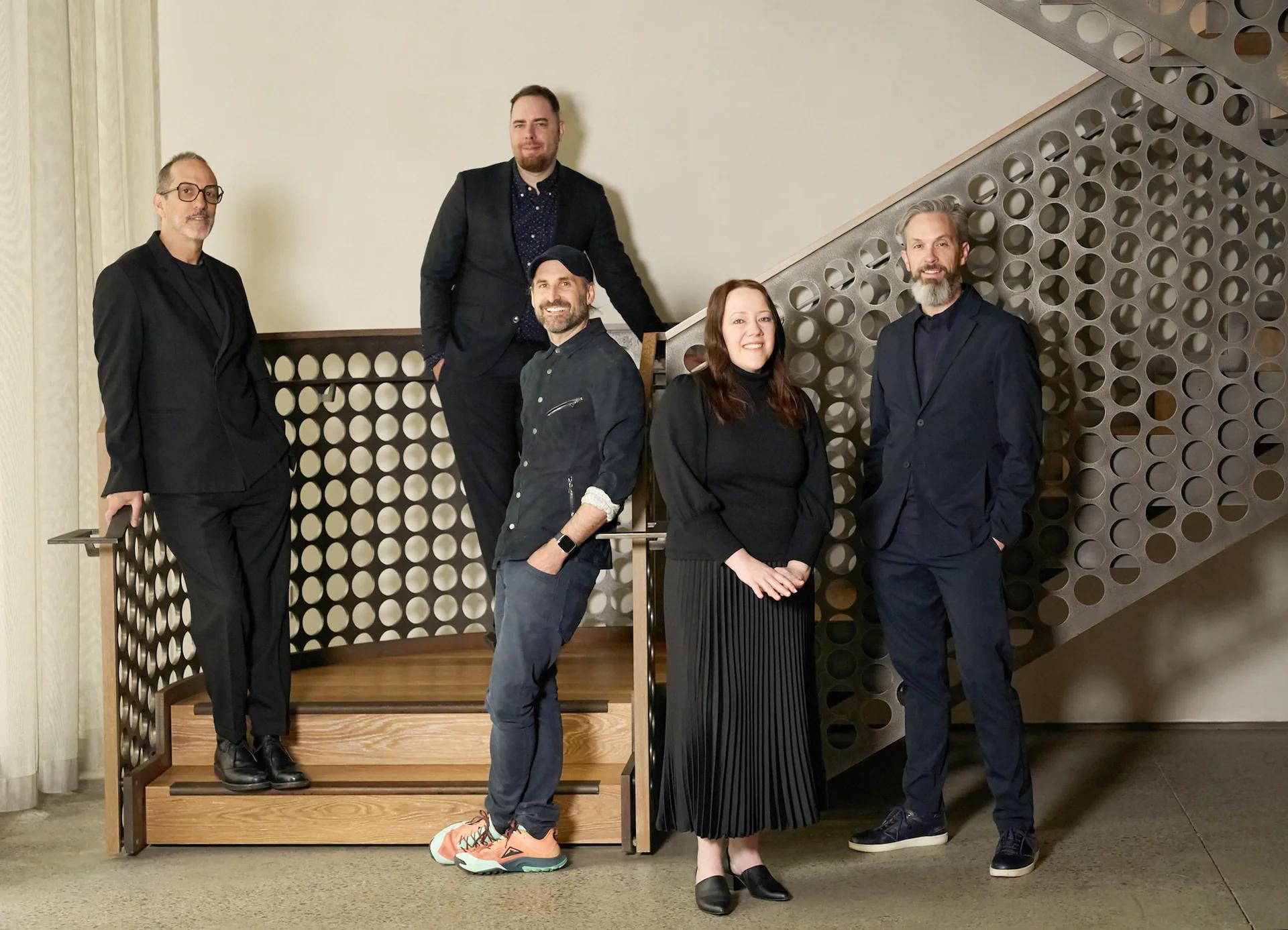
FROM LEFT: INC PARTNERS ADAM ROLSTON, TYLER KLECK, GABRIEL BENROTH, HILARY KROLL, AND DREW STUART
Photo by Christopher Garcia Valle; Courtesy of INC Architecture & Design
Design Miami/How and when did you, Gabriel Benroth, and Drew Stuart meet? And what was the catalyst for launching the practice?
Adam Rolston/Gabe, Drew, and I met working alongside each other in another studio. I was managing the internship program in that studio and hired both of them as interns. We liked each other and had very complementary talents. The rest is history.
DM/What was your original vision for INC, and has that evolved over the years?
AR/The name is the mission. The siloing of the disciplines of product, furniture, interior, and architectural design made no sense to us. We wanted to incorporate architecture and design into a single, vertically integrated hybrid studio. Thus the name “Incorporated Architecture and Design” or “INC" for short.
DM/Were there any particular moments that made you think we were on the right path?
AR/There was always only one path. Working up and down the various scales of the designed environment is how we think. It’s just who we are. It wasn't a choice. We don’t see the difference in the design of a 35-story residential tower facade versus a chair.

WARREN APARTMENT IN TRIBECA, NEW YORK
Photo by Joshua McHugh; Courtesy of INC Architecture & Design
DM/How would you describe your studio culture? And how does that inform the work you do?
AR/We are a radically diverse team of interdisciplinary experts from all over the world. We nurture each other's distinctive talents. The magic happens when those talents and unique worldviews come together.
DM/What sets INC apart from other practices working today?
AR/Designing our studio’s practice and process has been one of our deepest creative acts. Most of the world’s design studios are based on the 19th-century industrial model of top-down leadership, an expendable workforce, and specialized skill-based activity. That’s not us. We designed our studio around a network model based on talent and adjacency. There is always a complementary skill across the room. Excellence comes in the mixing of those talents.
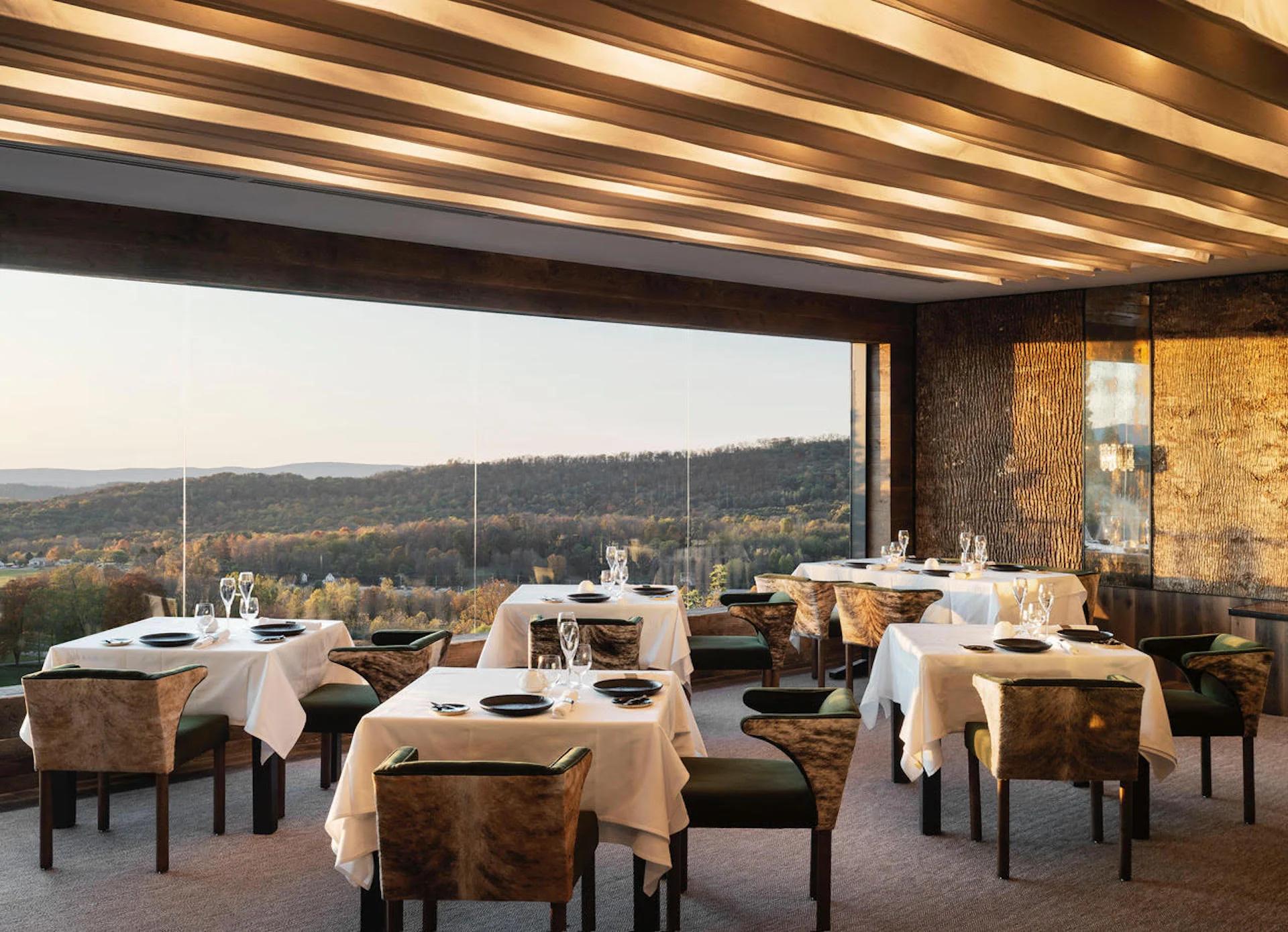
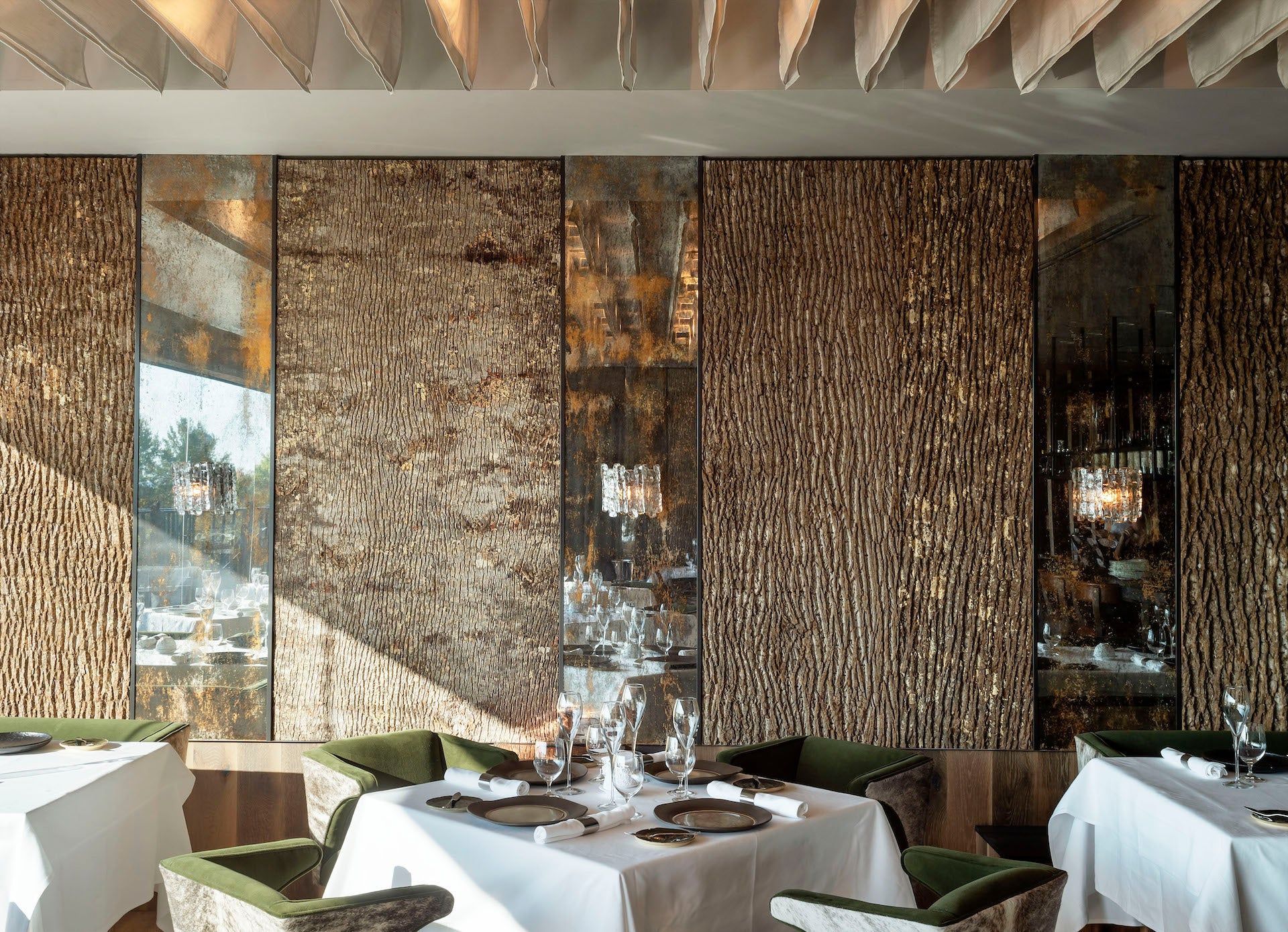
ABOVE: FOR RESTAURANT LATOUR, INC TOOK INSPIRATION FROM ITS EXQUISITE NATURAL SURROUNDINGS
Photos by Matthew Williams, Courtesy of INC Architecture & Design
DM/How do you choose your clients? Is there a specific set of criteria?
AR/No assholes. Smart AF. The best clients know their lane, bring a vision, are good decision-makers, and are at the top of their game. The rest is on us.
DM/You call your approach forensic aesthetics. For those less familiar, how do you define this term?
AR/Research is the foundation of everything we do. Forensic aesthetics is a research-based process we have developed to construct a project-specific world through design that is relatable emotionally and intuitively. Through this process, we create an environment that directly relates to its audience, is respectful of its locality, ecologically sensitive, forward-thinking, and yet can draw from the histories nascent in a project without being nostalgic.
The Latin root of forensic is “of the forum” or place of exchange. The Latin root of aesthetics is “of sense perception,” or to perceive, take notice of, to understand—a place of exchange to take notice of, to understand. To understand the meaning of public space and place-making sensually. This has always been our goal.
DM/When did it become clear that this was a core component of your work?
AR/You find out who you are when faced with a blank page. The house I designed for myself and my partner of thirty years and the first project published under the INC banner is simply a portrait of our lives together. That is when I discovered there is no such thing as a blank page in design. There is no tabula rasa. There is always a past that informs, a present with its pressures, and a future to aspire to.
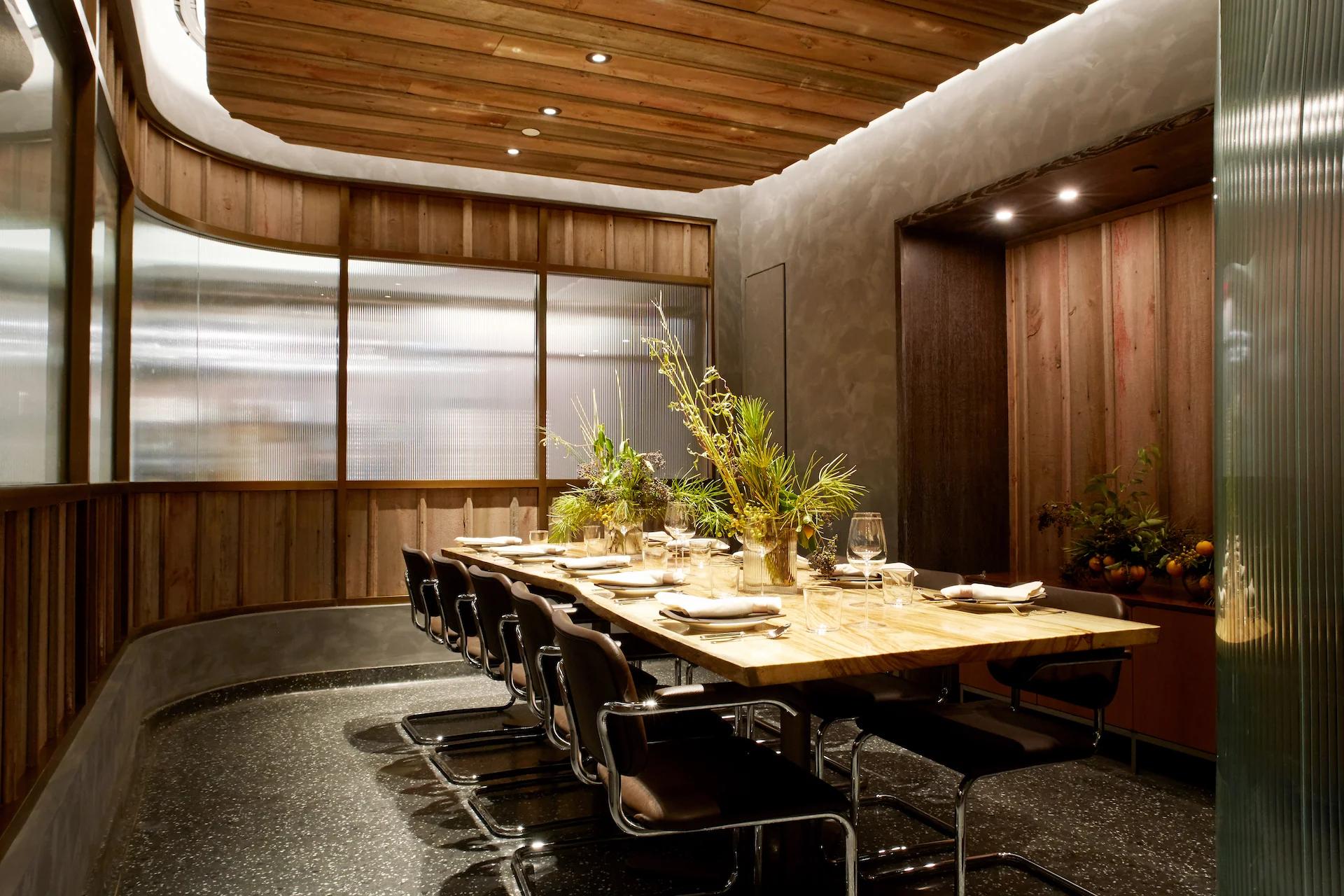
FIVE ACRES RESTAURANT WITHIN ROCKEFELLER CENTER
Photo by Signe Birck, Courtesy of INC Architecture & Design
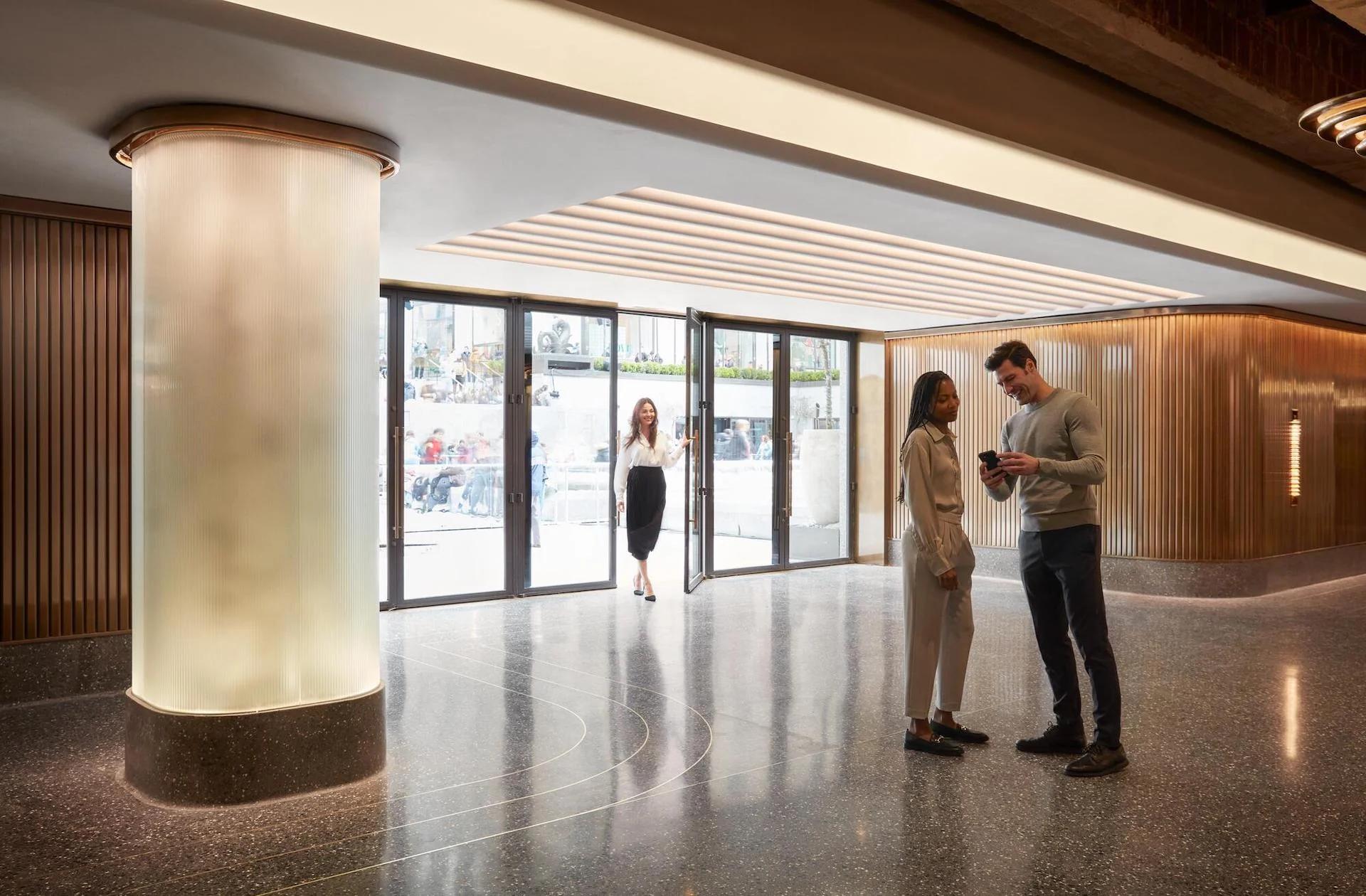
ROCKEFELLER CENTER RINK LEVEL
Photo by Stephen Kent Johnson, Courtesy of INC Architecture & Design
DM/What key aesthetic and cultural elements stood at the heart of the redesign within Rockefeller Center Concourse? How did they connect the past, present, and future?
AR/Rockefeller Center is a landmark and monument to our commercial and democratic values then and now. We took a forensic approach to understanding the campus’s aesthetic foundations. The vertical heroics of the towers. The horizontal flow and curvaceous elegance of Radio City Music Hall. The limestone and bronze palette. The neoclassical plan of the 1801 botanical garden that initially occupied the site. These all became inspiration and elements to inform a connection to the site’s history, solutions to the very real programmatic and circulation flows of the interior, and an aesthetic approach that points to a possible future of private and public social space.

FROM LEFT: ROCKEFELLER CENTER RINK LEVEL | 1 HOTEL BROOKLYN BRIDGE
Left: Photo by Stephen Kent Johnson | Right: Photo by Eric Laignel. Courtesy of INC
DM/Tell us about 1 Hotel Brooklyn. We understand it’s another strong example of forensic aesthetics as its design combines architectural, material, and natural environmental references—emphasizing environmentally conscious solutions.
AR/The 1 Hotel Brooklyn Bridge Park was our master class in sustainability and wellness. We understood for the first time what it meant to craft a sustainable social space, both technically and poetically. We also learned of the deep connection between sustainability and wellness because, as we like to say, what’s good for the planet is good for the human and vice versa.
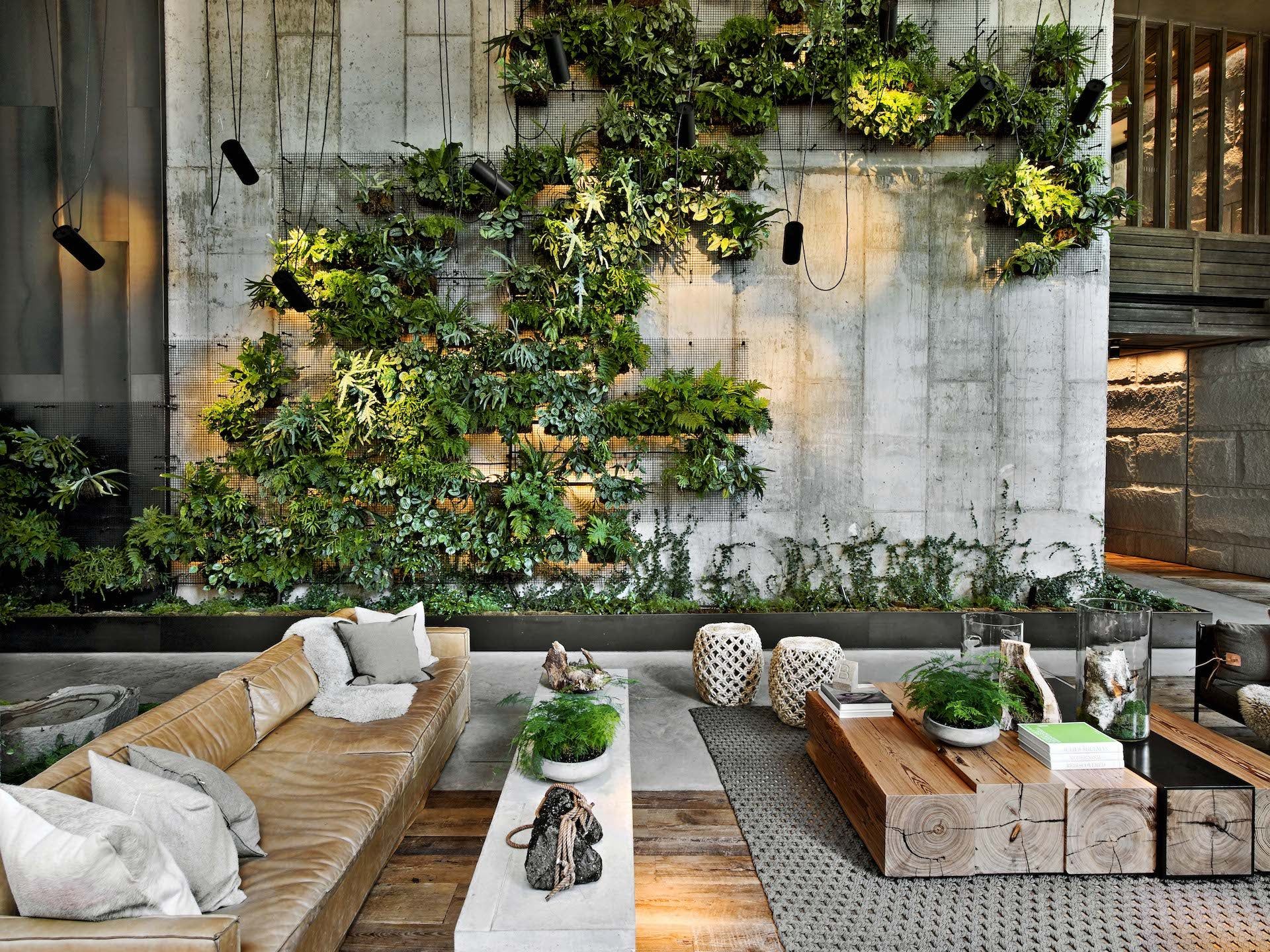
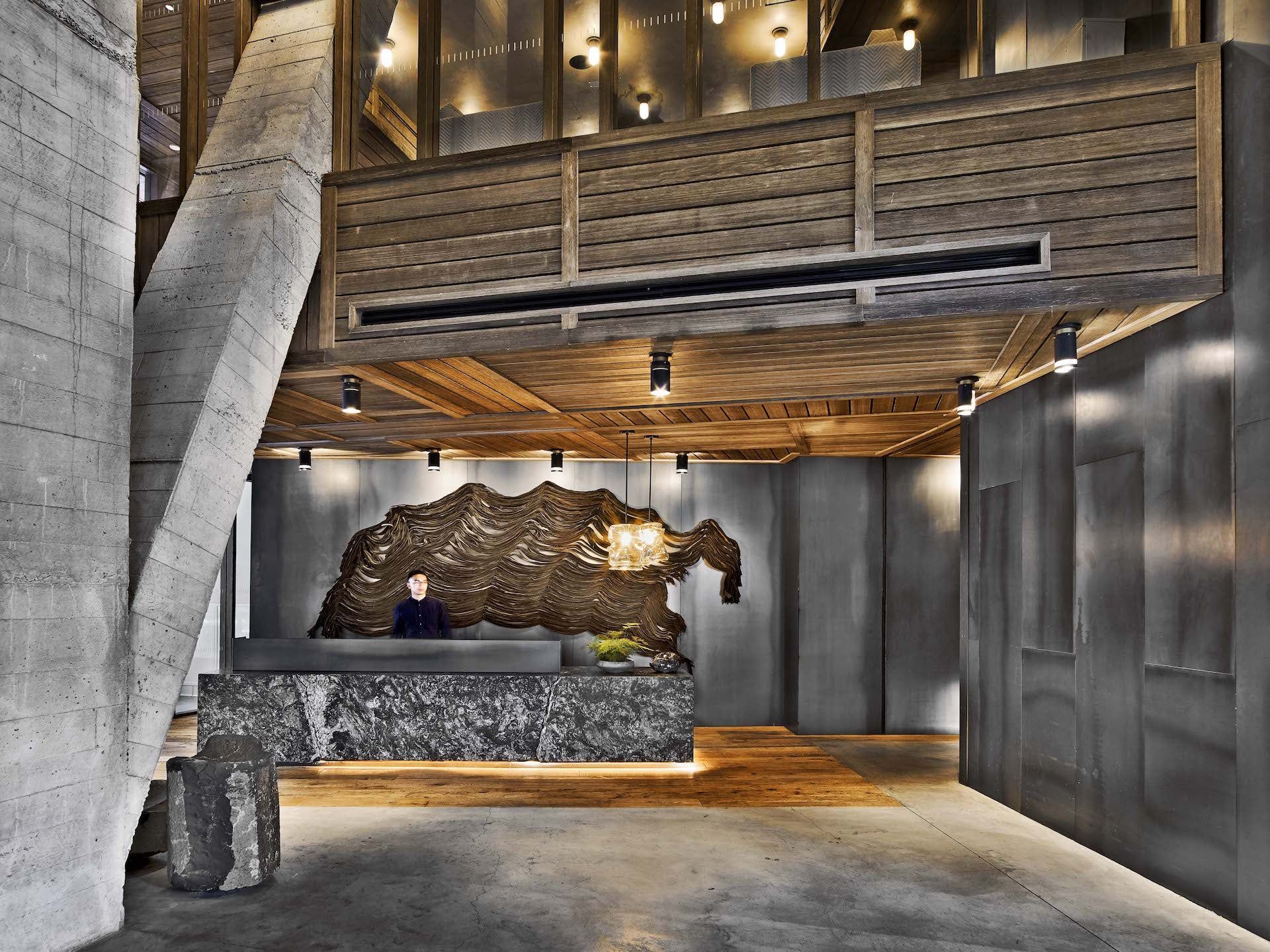
1 HOTEL BROOKLYN BRIDGE
Photos by Eric Laignel, Courtesy of INC Architecture & Design
DM/And your own office? How does its design fit into your larger approach?
AR/Our studio is a laboratory. It is very structured but also very flexible and always evolving. It is rough but also weirdly luxurious. It is a community center but also feels like home. It's light and plant-filled. It also has the only lighting system I know of that functions as a heliostat that reflects light deep into the warehouse loft floor plate, which, of course, was custom designed and fabricated by INC.
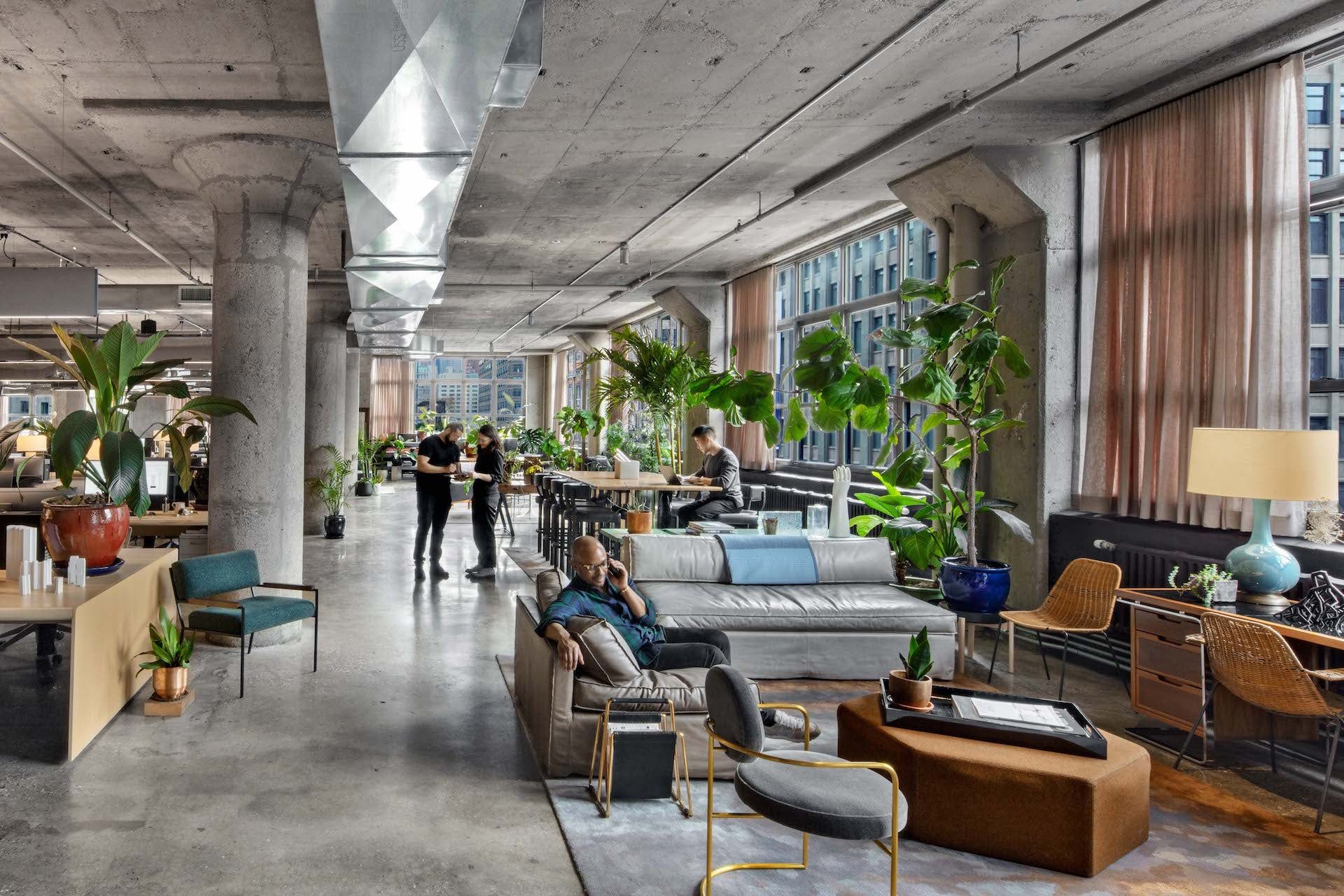

INC OFFICE IN SOHO
Photos by Eric Laignel; Courtesy of INC Architecture & Design
DM/You’ve noted that for a design project to be successful in your eyes, it has to work for all stakeholders in any space—not only your immediate client but also the local community and anyone else who might engage in that environment. Once those stakeholders are identified, how do you ensure your designs match their priorities and needs?
AR/We are aesthetic polymaths. We use radical empathy to understand the emotional and aesthetic needs of the end user to formulate a project-specific, visually symbolic language meaningful to that user. We have developed a 12-point game theory of design that builds a series of aesthetic and practical solutions.
DM/How would you describe the architectural scene in New York at this moment, and how does that differ from 5, 10, or even 20 years ago?
AR/Robust. New York City isn’t easy. It takes grit to survive and thrive here. That's why it draws among the world's best talent. Technology has democratized the design professions. New York City’s traditionally elitist design culture has given way to a diverse, category-defying cohort that has rendered the past institutional gatekeepers irrelevant.
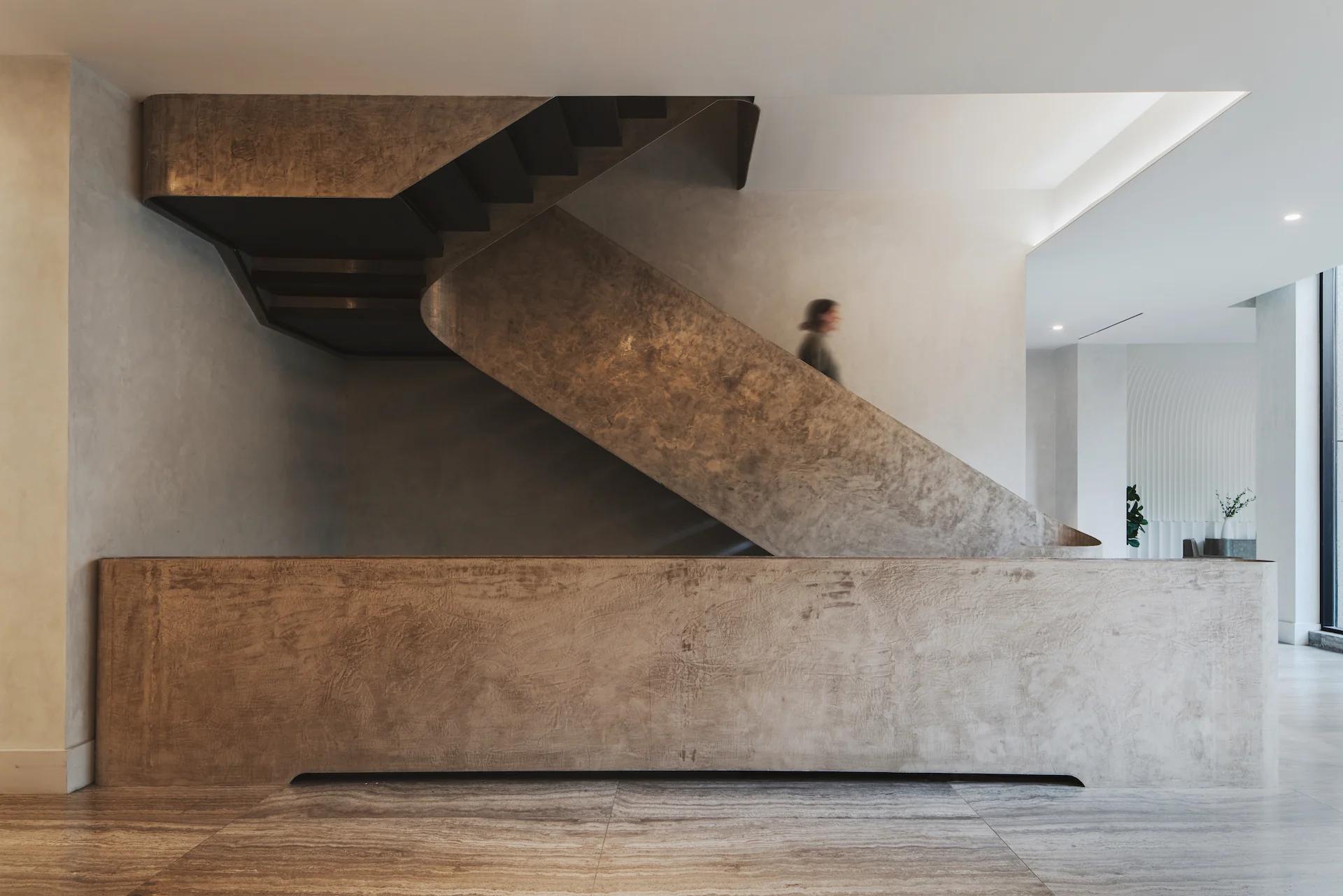
STAIRCASE AT SAINT MARKS PLACE IN BROOKLYN
Photo by Conor Harrigan, Courtesy of INC Architecture & Design
DM/Where do you hope to see INC 10 or even 20 years from now?
AR/The world, newly, values and craves gathering. We are designers of social space. We hope to bring the humanity of our approach to the institutions that need it most desperately, like museums, schools, libraries, community centers, and programs that haven’t been invented yet.
DM/Without giving too much away, what can you tell us about your work on the new Brooklyn Museum restaurant?
AR/Museums are radically transforming and finding new relevancy and audiences with a deeper understanding of their value as social spaces. The People’s Museum, the Brooklyn Museum, has always put its community and curatorial responsibilities on an equal footing. As designers of social space, we are uniquely positioned to work with them as they continue to lead and evolve.
DM/What’s up next for you? What else are you working on at the moment?
AR/The Aspen Club, a hotel at Harvard, two 35-story residential towers in Manhattan, Velvaere, a residential wellness community in Deer Valley, among many others. Our studio also recently became Climate Neutral certified, and we have begun pursuing an equity, sustainability, and governance certification with B Corp. We are working on a book, a manifesto, and recently launched INCtank, a research working group within the studio.

